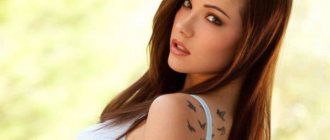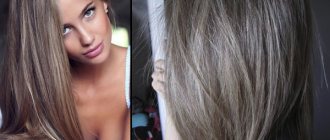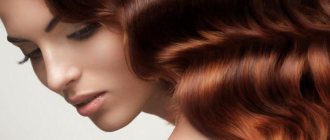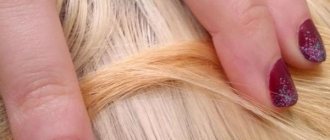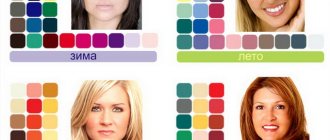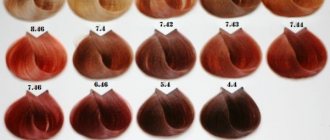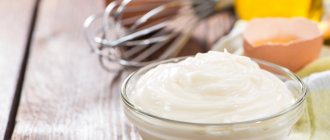Shades of chocolate
What colors are called chocolate?
There are different shades of chocolate - from soft beige to deep brown.
Chocolate hair color palette:
- milky (a combination of warm wheat and brown tones);
- dark (deep chestnut with highlights in the sun);
- warm chestnut (with chestnut highlights);
- caramel (deep beige with brown undertones);
- red (with fiery notes);
- black (with chestnut highlights in the sun).
Some tones (chocolate nut, chestnut chocolate) contain reflective pigment. In the rays of the bright sun it gives light red highlights. But unlike the Titian range, these highlights are only noticeable in the sun.
The warm palette of chocolate (milk, mocha) cannot cope with gray hair. But it fits well on undyed strands of light brown, ash and chocolate tones.
What is dark chocolate color?
This hair color is well suited for a business style. It attracts attention with its strict expressiveness. At the same time, it does not suppress femininity, but, on the contrary, reveals character from the side of sexuality.
The shade is similar to deep brown. But more intense
and shines slightly in the sun.
- Techniques for performing balayage on red hair of different lengths, for whom it will suit and styling secrets.
- Tinted hair tonics Estel, Loreal, Tonic and Neva, their color palette is here.
Who doesn't like the color?
Light shades of chocolate will not look beautiful on brown-eyed girls with dark skin and black hair. Lighter shades of hair will look inharmonious.

Natural red hair color, like dark hair, is very difficult to successfully dye into light chocolate, as this will turn a bright appearance into an ordinary and unnatural one. Especially if the eyes are green and there are freckles on the skin.
Who is it suitable for?
When choosing a new hair color, you need to take into account many nuances. Even the most beautiful tone will ruin your appearance if it is not chosen taking into account your appearance.
What type of appearance is it suitable for?
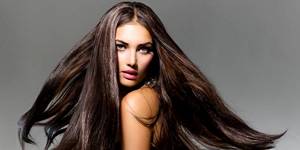
The concept of color type includes a number of nuances - skin tone, eye tone, natural hair shade.
The color of chocolate is ideal for representatives of the winter color type. These are women with light or dark skin, black or brown eyes.
Combination with other color types:
- Summer (light olive skin, light brown strands, gray, blue eyes) To prevent the tone of your hair from drawing attention to yourself, you will have to wear bright makeup every time. Eyeliner, long thick eyelashes, and scarlet lipstick will do. Eyebrows and eyelashes should be the same color. If you have a Scandinavian type of appearance with white skin and light eyes, combined with dark chocolate hair, the image will be attractive, but extravagant. Curls will emphasize the brightness of the eyes and the snow-whiteness of the face.
- Spring (skin with a light light undertone, light eyes) Recommendations are the same as in the previous case. But be careful in your choice. Warm hair tones are recommended for warm skin tones.
- Autumn (the strands are golden, the skin tone is soft, warm, there are usually freckles on the face) Classic dark chocolate will look inharmonious.
Face shape

Consider your face shape. If it:
- Full, round Dark curls will hide the excessive roundness of the cheeks and add slimness and grace.
- Thin, elongated The shade will further emphasize thinness and add age.
What age is dark chocolate best for?
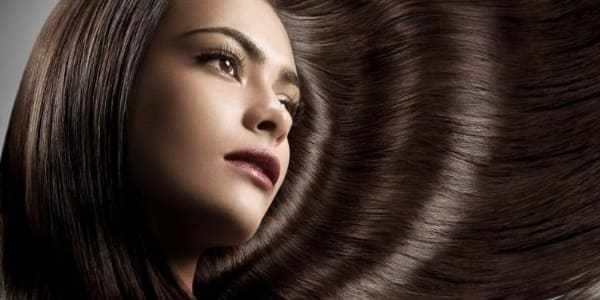
It is ideal for young women aged 20-30 years.
Afterwards, with rare exceptions, he gains years. If you are over 40 and want to hide wrinkles and other skin imperfections, choose a different shade.
Because a deep chocolate tone will give you visual fatigue, dullness, that is, it will not work to your advantage. If you're determined to tone your hair, adjust your haircut and makeup.
Other nuances of choice
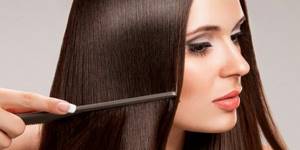
The best hairstyles for this shade:
- curled curls on a long cascading haircut;
- straight flowing hair with even bangs;
- graduated square;
- casual short haircut.
The color of your hair affects your sense of self and, accordingly, your behavior. Women who have natural dark hair are usually purposeful and self-sufficient.
Who shouldn't wear dark chocolate?
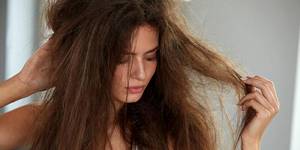
Dark chocolate emphasizes the virtues of clean, well-groomed skin. If your face is covered with pimples or wrinkles, then it is better to avoid such coloring.
The shade is not suitable for girls with light eyebrows. Eyebrows will need to be darkened every time.
If you have a naturally calm, neutral appearance, but you are not ready to do bright, expressive makeup every day, this color is also not for you.
Care
Dyed hair requires special care to maintain color
We present to you 5 rules of good care:
- Visit your hairdresser once a month and have your split ends trimmed. This way you will make it more neat and help healthy hair receive proper nutrition. Such visits will help keep your hair aesthetically pleasing longer.
- After dyeing, hair is often dehydrated and exhausted. They require moisturizing and nourishing masks at least once a week.
- Avoid frequent use of hair dryers and curling irons - they dry out your hair even more.
- Do not forget that hair coloring negatively affects the scalp. Be sure to make special masks that moisturize the scalp itself, and massage yourself periodically.
- Protect your hair from direct sunlight as the color may fade. In summer, use a special sunscreen spray.
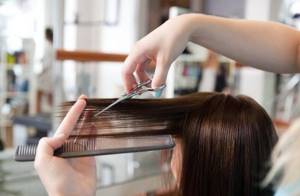
Regardless of what shade or technology you use to dye your hair, the choice of color and special care guarantees a more beautiful, long-lasting color and healthy appearance.
Variety of colors
How to choose the right paint

Basic tips:
- Buy quality, proven products. A deep chocolate shade looks noble if it is obtained as a result of using a high-quality coloring composition. Don't skimp on paint. Buy only proven professional ones. Otherwise, no effect of nobility will be achieved, and it will take more time and money to restore the strands.
- Read the composition It should not contain lead acetate or coal tar. They damage the hair structure and skin. It is advisable that the composition contains UV filters that will protect your strands.
- Consider the base tone of your strands. The result will be the same as in the package if your strands are natural and light. If your hair is dyed, the results may vary. To prevent it from upsetting you, try dyeing one strand first.
- Choose the product individually. Do not rely only on the advice of your friends. The structure of the strands is different for everyone. Therefore, the dye of the same company on different hair appears lighter or, conversely, darker.
The best paint manufacturers
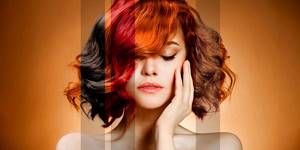
The best reviews regarding the dark chocolate shade were received by paints from the following brands:
- L'Oreal (L'Oreal Prodigy – 3.0);
- Garnier (Garnier Color Naturals - 3.23);
- Palette (Palett W2);
- Schwarzkopf Perfect Mousse – 365;
- Syoss (Syoss Mixing Colors – 3-8);
- Wellaton (Wellaton – 4.0).
- What is the difference between ombre and balayage: what is the difference between techniques and which one is better to choose.
- Review of Igora hair dye: color palette, price, as well as instructions for use are here.
Partial coloring techniques
A single-color, even hair color noticeably loses to multi-stage dyeing with a mixture of tones, because it allows you to choose the most suitable color for each individual type of appearance and gives the hair naturalness, and the color - depth and versatility.
Some techniques are considered more gentle than completely painting the entire length of the hair. The noble shade of dark chocolate suits them like no other.
Highlighting
Highlighting gives your hair volume, fullness and a well-groomed appearance. This is a great way to add a new look to your look without radically changing your appearance. This creates the illusion that individual strands have naturally faded under the rays of the summer sun.
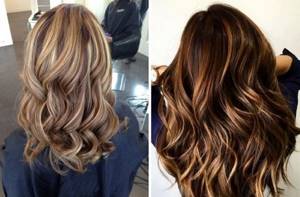
Chocolate shades look especially advantageous in the California highlighting technique due to the harmonious transitions from light to dark shades. It is also suitable for red, brown and light brown hair.
It is important that the dye is not applied to all hair, but to individual thin strands and dries naturally without foil. This minimizes adverse effects on the hair.
Coloring
Coloring is rather a type of highlighting using several tones, similar or different in color palette. There are 2 types of coloring - vertical and horizontal.
In the second case, usually 3-4 shades are taken as a basis , and a smooth transition of color is carried out from the roots to the tips: from the darkest - through the middle tone - to the lightest. When vertical coloring is used, from 4 to 19 tones are used, and each individual strand is painted with one color.
Ombre or gradient
Ombre as a technique was initially only a type of coloring in 2 tones, but over time it became a separate technique. With it, the segment at the roots is highlighted in a dark tone, and then the color stretches to the lightest tone at the tips.
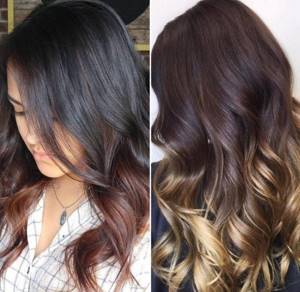
The color transition can be smooth or blurry, or the border between tones can be sharply defined. This technique looks especially good on long hair of a brown palette - chestnut, chocolate, caramel or coffee color. It gives the hair vitality and volume.
Booking
An ideal technique for those with brown hair, such as dark chocolate. It combines highlighting and coloring. The basis is usually 3 or 4 tones of one palette.
Bronding is one of the most gentle coloring techniques, allowing you to preserve the natural hair color to the maximum or hide the flaws of a previous unsuccessful coloring. It looks most impressive on long or medium-length hair.
Shatush, or French highlighting
This technique allows you to achieve the effect of sun highlights on your hair. It is suitable for both light and dark shades. The tone transition in this case is as natural as possible , and the regrown ends often look like part of the original plan, so visits to the stylist to adjust the color can be made much less frequently.
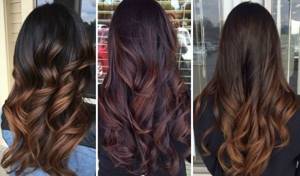
Two more fashionable techniques - balayage and mazhimesh - look very impressive, but are mainly suitable for light hair.
The color dark chocolate, popular this season, is present in the hair dye lines of the most trusted and reliable cosmetic brands. This allows you to choose the paint that is most suitable in price, composition, and shade, guaranteeing excellent results and a luxurious tone for a long time.
Features of dark chocolate coloring
To get “dark chocolate”, the natural shade of hair can be different.
But sometimes the result does not live up to expectations. Here's what happens:
- The ideal tone will come out on natural brown or blond hair.
- If the strands are colored, you may end up with an unexpected undertone.
- If you are a brunette, without first bleaching your hair, your strands will simply acquire a subtle chocolate tint. It will only be visible in the sun.
Women who regularly tint their hair a chocolate shade notice that it becomes darker over time. The pigment is firmly integrated into the hair structure and is no longer washed out when washing your hair.
Take this feature into account before changing the natural color to chocolate.
Easily matches with light natural hair color
If your hair is naturally light and has not been dyed
, applying the composition will be very easy.
The paint will apply evenly
and give a good effect.
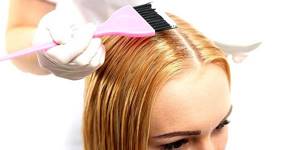
All light shades of natural hair - from light blond to light brown - are well colored with chocolate. But due to the different intensity of natural pigment, the result will be slightly different.
And one more thing: the lighter your natural curls, the more often you will need to dye your roots.
It is not advisable to dye previously treated hair.
If the strands are colored in other dark shades
(mahogany, black, blue black, mahogany, eggplant),
then before applying the composition, the old paint must be washed off.
This is the only way to get an even tone along the entire length of the strands.
More than one wash may be needed. And this greatly injures the hair. Therefore, it is not advisable to dye strands that have already been treated with other dark, rich tones.
How to achieve the desired color without a red tint?
Hair the color of “light chocolate” can be spoiled by the appearance of a red tint, which will be clearly visible in photographs. This may be the result of bad hair dye or poor quality work by the hairdresser.
In order to obtain a uniform warm tone without reddish reflections, preference should be given to paints of darker shades. The final color may be darker than expected, but it will lighten a little after a few washes. The most important thing is to follow the instructions on the package and not overexpose the coloring pigment to your hair.
Secrets of excellent coloring from professionals
Coloring Tips
To get a beautiful deep chocolate tint, professionals prepare the coloring composition by hand.
, based on the characteristics of your hair.
If the strands are black, a color neutralizer is used, then neutralization of the red tint is used, only after that the pigment is applied.
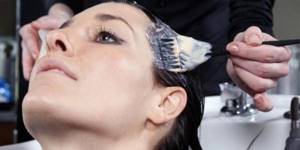
There are difficulties when dyeing red hair. They can get a greenish tint, so several stages are used here too.
To predict the result, you can:
- do a preliminary test on a thin, inconspicuous strand;
- during the test coloring, note the time to understand how many minutes it takes for the hair to acquire the desired shade;
- repaint chocolate gradually (in several procedures, possibly through highlighting), achieving the desired color over and over again;
- Do not apply dye to newly bleached hair, otherwise you may end up with a red tint.
It is worth considering that the chocolate color will wash out faster from lightened strands than from dark ones.
Features of caring for chocolate-colored hair
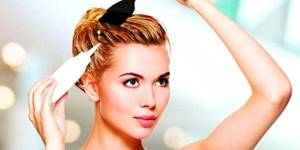
In order for the shine and richness of chocolate to remain on your curls for a long time, you need to properly care for them:
- Immediately after the dyeing procedure, the strands should be thoroughly rinsed using a special balm. It covers each hair with the thinnest transparent film. Thus, it fixes the color, protects against aggressive environmental factors, and adds shine to the hair.
- Shampoos, conditioners, mousses and other care products from the “for dark curls” series help preserve the shade. Ideal – moisturizing, restoring.
- Plant-based products are good for rinsing: oak bark decoction, etc. They soften the water, nourish and moisturize the structure of the strands.
- Dry your curls without a hairdryer, use a straightener and curling iron less often.
- Avoid getting a perm for at least the next two weeks.
- Make sure that your curls do not fade in the sun. Under the influence of sunlight, the color quickly fades, and the hair dries out and loses its shine. Therefore, either hide them under a hat or treat them with an SPF factor.
- Use toning products. Can be natural. For example, walnut extract, onion peel decoction, coffee.
The color is dark chocolate – classic, noble. To be satisfied with the result, make sure it suits you.
After this, it is better to contact a specialist. He will perform the coloring procedure taking into account the condition of your curls. Remember, the shade will delight you with richness and shine only with proper care.
Is it possible to dye your hair chocolate color with natural dyes?
Modern manufacturers of hair dyes offer many shades and gentle compositions, but many representatives of the fair sex prefer the use of natural dyes. The most common are henna and basma. Depending on the proportions when mixing, you can expect a different effect on the hair.
But it is important to remember that the color range of such paints is quite narrow.
Dyeing with henna will give a red or light red effect depending on the time the mixture is left on the hair. To obtain dark or chocolate hair color, a tandem of basma and henna is recommended, and experienced natural dyeing specialists first dye with henna for 40 minutes, and then apply a mixture of basma for half an hour.
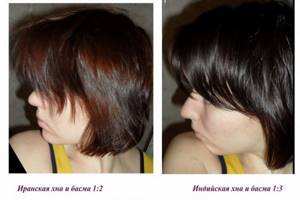
also possible to dye your hair chocolate color using finely ground coffee diluted with warm water to the consistency of a thick mask. The mixture is applied to clean hair for 60 minutes.
A clear advantage of natural dyeing is the strengthening of hair, but the durability of natural dyes leaves much to be desired. The chocolate color from natural dyes washes out very quickly and often turns reddish.

